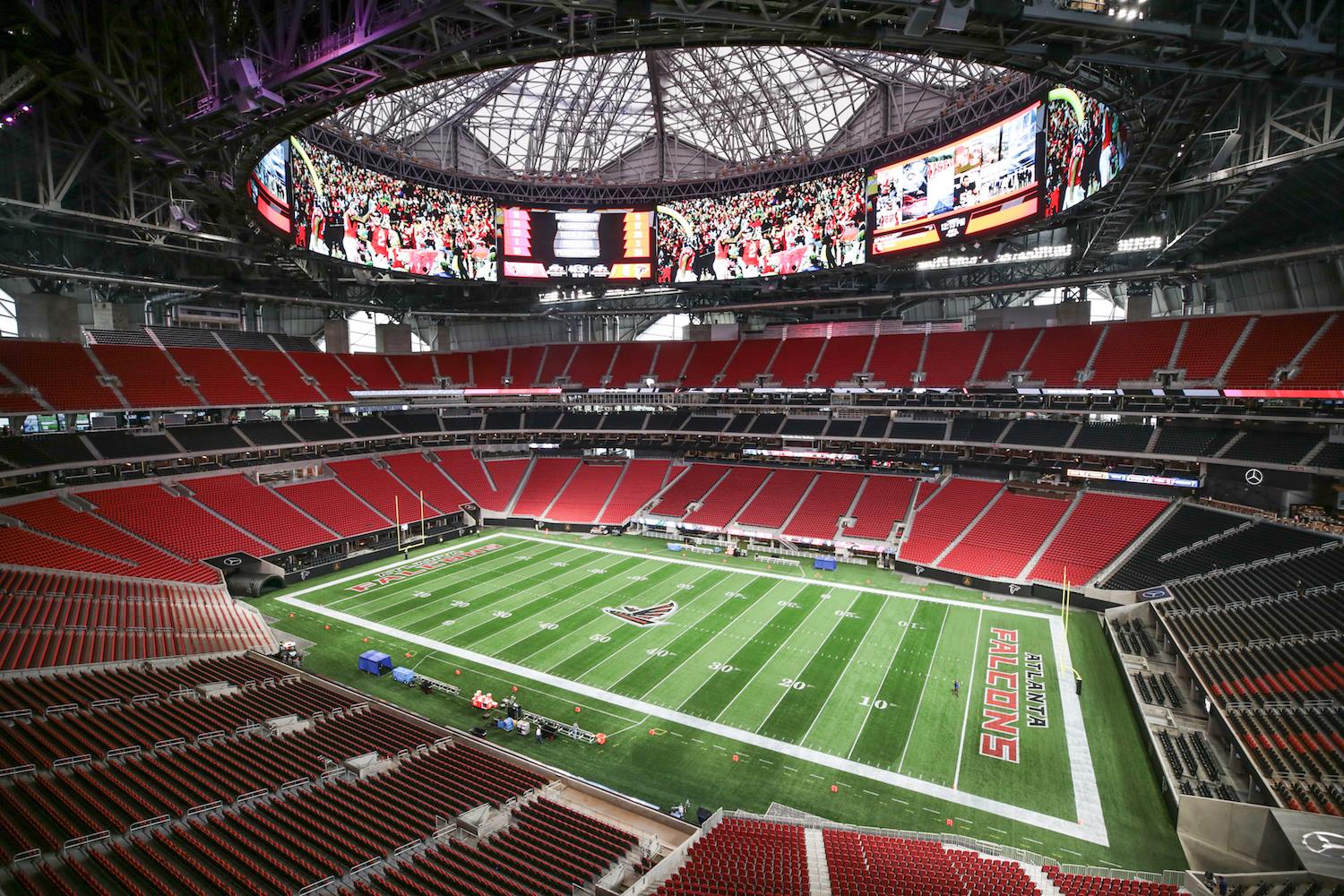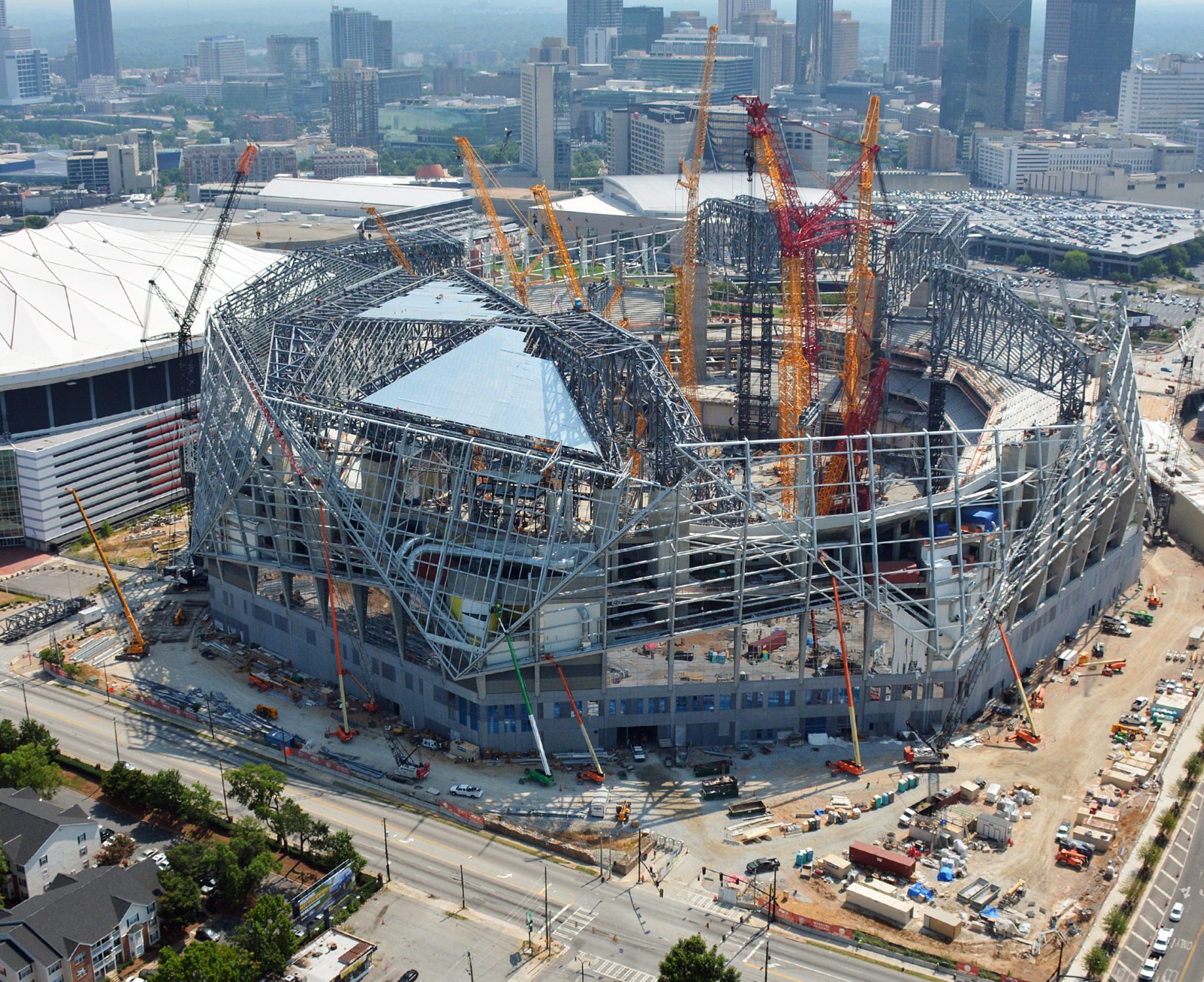Mercedes-Benz Stadium: A Modern Icon of Sustainable Sports Architecture
Overview and Vision
Opened in 2017, Mercedes-Benz Stadium in Atlanta, Georgia, is a state-of-the-art sports venue designed to represent the future of stadium architecture. This iconic stadium serves as the home of the Atlanta Falcons and Atlanta United FC, drawing global attention for its ambitious design, innovative technology, and dedication to sustainability. Built at a cost of approximately $1.6 billion, it aims to set a new standard in sports arenas by focusing on fan experience and environmental responsibility.
Architectural Design and Retractable Roof
One of the stadium’s standout features is its retractable roof, designed by architecture firm HOK. Inspired by the oculus of the ancient Roman Pantheon, the roof comprises eight triangular panels that open and close like a camera aperture. The design evokes the feeling of wings in motion, creating a visual marvel for fans inside and outside the stadium. This unique roof isn’t just aesthetic; it’s functional. When open, it allows fresh air and natural light to enter, enhancing the game-day atmosphere. This adaptability makes the stadium a model for both indoor and outdoor events, allowing optimal comfort in various weather conditions.
The Halo Board: An Immersive Experience
Another major attraction is the Halo Board, one of the largest LED video screens in the world, spanning over 63,000 square feet. This circular screen wraps around the entire stadium, providing 360-degree views of the action and offering every seat a high-definition vantage point. The Halo Board’s vast display brings fans closer to the game, enabling real-time interaction with statistics, player highlights, and instant replays.
The immersive capabilities of the Halo Board redefine what it means to attend a game, allowing fans to connect with the sport in unprecedented ways. Each seat becomes a unique viewing experience, with the screen and in-stadium app offering personalized information and interactive elements. The technology promotes a deeper understanding of the game and adds an interactive layer to the spectator experience.
Commitment to Sustainability
Mercedes-Benz Stadium is one of the most environmentally conscious stadiums globally, earning LEED Platinum certification—an achievement marking it as a pioneer in sustainable sports architecture. It uses a water conservation system capable of capturing and storing 2 million gallons of rainwater annually. This system helps reduce flooding risks and supports the community by reusing rainwater.
The stadium also features 4,000 solar panels, generating enough electricity to power several Falcons games each season. The energy-efficient design and strategic use of LED lighting contribute to a 60% reduction in energy consumption compared to traditional stadiums. Waste reduction is another priority, with recycling and composting programs that divert thousands of tons of waste from landfills each year.
Fan-Centric Amenities and Versatility
Beyond its architectural innovation, Mercedes-Benz Stadium is designed for a premier fan experience. It has open concourses that offer clear views of the field, enhancing accessibility and crowd flow. Food and beverage options at the stadium emphasize affordability, creating a more inclusive experience for fans of all backgrounds. High-speed Wi-Fi, a stadium app, and interactive kiosks provide connectivity and allow fans to tailor their in-stadium experience.
Mercedes-Benz Stadium isn’t limited to sports; it’s a multi-purpose venue equipped to host concerts, conventions, and large-scale events. This adaptability and multifunctional design further cement its role as a cultural hub in Atlanta, promoting the city’s role in sports, entertainment, and green building practices.
Impact on Modern Stadium Design
As a blend of cutting-edge design, fan-focused technology, and sustainable architecture, Mercedes-Benz Stadium has redefined what a sports venue can be. Its commitment to innovation and sustainability is influencing stadium designs worldwide, serving as a model for future arenas. The integration of technology, sustainability, and fan-centric design has made it a benchmark for modern sports architecture, transforming how fans experience live events and setting new standards for stadiums globally.


/cdn.vox-cdn.com/uploads/chorus_image/image/56229671/Stadium_60.0.jpg)




Comentarios
Publicar un comentario